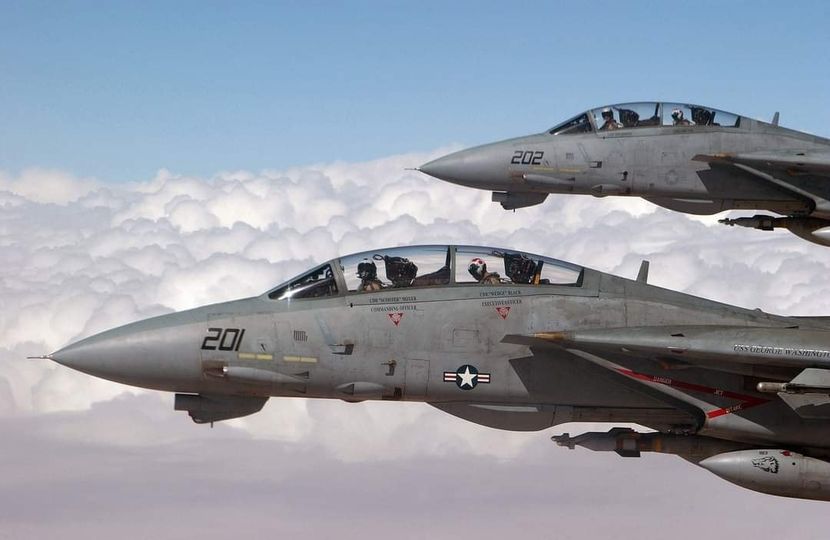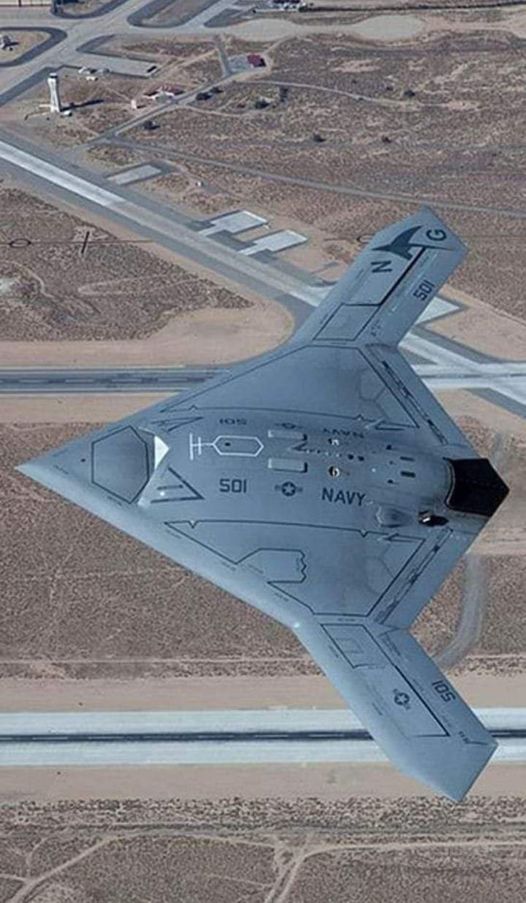The Harrier story is one of the most remarkable in post-war British aviation history, reflecting technological advance, innovation and both political and service indecision. Dr Kevin Wright looks back at five decades of development and operation of the UK’s Harriers and Sea Harriers.
From the very first tethered flight to the mountains of Afghanistan via Cold War West Germany, Belize and the Falklands, the British Harrier story spans more than 50 years from creation and operational use through to premature retirement.
The engineering challenges to create the world’s first vertical/short take-off and landing (V/STOL) fighter aircraft to enter operational service were formidable. They included the design and construction of sufficiently powerful engines to lift and propel the fighter, how to transition from vertical to wing-supported flight and back again and the development of complex flight controls among a host of issues.
How the Harrier was funded
British Government funding and service interest in the project was close to nonexistent and early finance was provided by Hawker Siddeley and the US/NATO-financed Mutual Weapons Development Program.
By the late 1950s, momentum for Hawker Siddeley’s P.1127 project gradually began to grow, but enthusiasm for the more ambitious, supersonic P.1121 and P.1154 projects waned. The latter were eventually abandoned in 1964.
In March 1959 Hawker Siddeley decided to build two P.1127 prototypes, mostly using its own funds. There was support from NASA with wind tunnel and experimental assistance, plus NATO-sourced money for the new NBMR- 3 (NATO Basic Military Requirement) V/STOL fighter initiative to replace the Fiat G-91.
Belatedly, in June 1960, the British Government finally provided official funding for the project and contracted Hawker Siddeley to provide two prototype aircraft (XP831 and XP836) under Experimental Requirement ER.204D. They were officially designated as ‘research’ machines.
On October 21 the same year, XP831 became airborne for the first time. Test pilot Bill Bedford was at the controls for the flight from Dunsfold, Surrey. The aircraft was tethered for initial trials but when that requirement was removed, and as control mechanisms were improved, the hover techniques were gradually perfected and transition from vertical to horizontal flight was achieved on September 12, 1961.
Further evaluation aircraft emerged with a batch of four P.1127s followed by nine Kestrel FGA.1s assigned to the Tripartite Evaluation Squadron. British, American and West German pilots flew 938 missions with the unit at RAF West Raynham, Norfolk during 1964-65.
Next came a further six aircraft block of P.1127(RAF) aircraft – flying between August 1966 and the following July.
 The Hawker P.1127 was the first step in the process of developing an operational V/STOL combat aircraft.The Aviation Photo Company
The Hawker P.1127 was the first step in the process of developing an operational V/STOL combat aircraft.The Aviation Photo Company
 Nine Kestrel FGA.1s, including XS688, were purchased to serve with the Tri-partite Evaluation Squadron at RAF Watton in 1964-65.
Nine Kestrel FGA.1s, including XS688, were purchased to serve with the Tri-partite Evaluation Squadron at RAF Watton in 1964-65.
 1975.Peter Foster
1975.Peter Foster
First-generation Harrier
The Harrier GR.1 first flew on December 28, 1967. While superficially similar to the Kestrel, the production Harriers were very different aircraft in engineering terms. The Kestrel’s 15,200lb st Bristol Siddeley BS.53 Pegasus 5 engine was replaced in the GR.1 by the 19,000lb st Rolls-Royce Pegasus Mk.101. The new variant was also superior as it included flight control surface improvements, better avionics and other design enhancements. The GR.1s were ushered into service by the Harrier Conversion Team (HCT), formed at RAF Wittering, Cambridgeshire on January 1, 1969.
After considerable testing with Hawker Siddeley, the first aircraft for the HCT arrived on May 17, 1969. The initial examples were first used to train additional instructors and a cadre of squadron pilots. This was all without the benefit of a simulator, or two-seat trainers, with pilots introduced to vertical flying via a Westland Whirlwind helicopter. The HCT was wound down when 233 Operational Conversion Unit (OCU) formed on October 1, 1970, and the first two-seat Harrier arrived in July the same year. Soon ‘twin-tub’ Harriers would also be available at squadron level too.
Intended to operate as an army close-air support and tactical reconnaissance aircraft, the Harrier’s key operational attribute was its flexibility to be free of traditional runways. For field operations, it could, in theory, deploy almost anywhere, which in turn led to the creation of a whole range of flying and logistical techniques for ‘dispersed operations’. The potential value of such a capability had been clearly demonstrated just a few years before, during the June 1967 Six-Day War when the Israeli Air Force carried out preemptive strikes against airfields across Egypt, Syria, Lebanon and Jordan, paralysing their air forces.
When did the Harrier enter service?
The Harrier GR.1 entered service with 1 Sqn at RAF Wittering in summer 1969, beginning the unit’s 41-year association with the type. The squadron received its full aircraft complement by August 1970 and was soon committed to NATO’s Allied Mobile Force (AMF), expected to be deployed on the Alliance’s northern flank and a regular visitor to Norway for exercises.
The unit was also assigned to the UK Mobile Force (UKMF) for rapid deployment in support of independent British interests. In war time the aircraft would have dispersed away from airfields to conduct operations. They would have been supported by a range of personnel such as an intelligence cell, mobile photo-processing units, RAF Regiment force protection as well as Royal Engineers. For more on this type of operation see the article that starts on p36.
RAF Germany (RAFG) was the obvious choice to base Harriers because it was in West Germany where it was most likely to be needed for close air support against Warsaw Pact forces.
As such, IV (Army Co-operation) Squadron, which was already operational in West Germany and had been flying the Hawker Hunter, became the second RAF operational Harrier unit on June 1, 1970, followed by 20 Squadron on December 1 the same year and 3 (Fighter) Squadron on January 1, 1973.
Rather than working up at RAF Wittering, 3(F) Sqn formed in West Germany with its new-build Harrier GR.1As. All three units were based at RAF Wildenrath, near the Dutch- German border, but in early 1977 exchanged places with 19 and 92 Sqns from RAF Gütersloh. This placed the Harriers within 75 miles (120km) of the East German border.
No.20 Sqn ended its first association with the Harrier in the spring of 1977 when it re-equipped with SEPECAT Jaguar GR.1s and moved to RAF Brüggen. Its Harriers and crews were divided between the remaining two RAFG Harrier squadrons, bringing them up to the full NATO Squadron strength of 18 aircraft each.
The difference between the Harrier GR.1 and GR.3
The early Harrier GR.1s contained several unique pieces of equipment for the time, including a Ferranti FE541 inertial navigation system, moving map and head-up display (HUD). The GR1A had the Pegasus Mk.102 with 1,500lb of extra thrust and minor avionics differences. It first flew on June 11, 1971.
 A Harrier T.4 of 3(F) Sqn. Two-seat Harriers were made available to all frontline squadrons to assist with unit continuation training.AirTeamImages.com/ Keith Blincow (ATI)
A Harrier T.4 of 3(F) Sqn. Two-seat Harriers were made available to all frontline squadrons to assist with unit continuation training.AirTeamImages.com/ Keith Blincow (ATI)
The RAF purchased 118 single-seat first generation Harriers including: 61 GR.1 airframes, 17 GR.1As and 40 new-build GR.3s, all delivered between December 28, 1967 and February 1987. Surviving GR.1 and GR.1A aircraft were converted to GR.3 standard by 1975.
The GR.3 had the 21,500lb st Pegasus Mk.103 with other modifications including an improved starter and electrical system. The latter facilitated installation of a radar warning receiver (RWR) and the Ferranti Type 106 Laser Ranger and Marked Target Seeker (LRTMS), which had been developed for the Jaguar. This was built into new production aircraft and retrofitted into the rest of the Harriers being modified to GR.3 standard; the new nose being the main external distinguishing feature of the GR.3.
Small, incremental combined packages of avionic, airframe and engine improvements, largely became the pattern of British Harrier Force development throughout its career.
Elsewhere, in the former British colony of Belize, periodic fears of a Guatemalan invasion saw RAF Harriers based there from 1975.
Six Harriers from 1 Sqn arrived at Belize International Airport in November 1975 as a show of force to deter Guatemalan aggression.
They returned to Britain in April 1976 but in June 1977 Harrier GR.3s deployed directly from the UK again as part of a larger, more permanent British Army and RAF presence. Ground defences were stepped up and a series of semipermanent hides and facilities were constructed.
This deployment was rotated between Harrier squadrons for some time before becoming 1417 Flight on April 18, 1980. Meanwhile, back in Britain, 233 OCU became responsible for technical support of 1417 Flight and when 1 Sqn converted to the new Harrier GR.5 the OCU retained ten GR.3s until 1417 Flight, the last operational GR.3 unit, disbanded in July 1993.
 Pristine Sea Harrier FRS.1 in 800 NAS markings shortly after the unit was formed in April 1980.Dr Kevin Wright
Pristine Sea Harrier FRS.1 in 800 NAS markings shortly after the unit was formed in April 1980.Dr Kevin Wright
 An 899 NAS Sea Harrier FRS.1 at RNAS Yeovilton in 1980 and pre-Falklands squadron colour scheme and markings.Dr Kevin Wright
An 899 NAS Sea Harrier FRS.1 at RNAS Yeovilton in 1980 and pre-Falklands squadron colour scheme and markings.Dr Kevin Wright
Aircraft carrier version of the Harrier
Shipborne Harriers were an obvious progression of the programme; identified from very early on as offering great potential benefits. Shorter decks for take-off and vertical recovery also obviated the need for complex catapult and arrester gear.
However, possible Fleet Air Arm (FAA) Harrier acquisition was inextricably linked to the wider discussions over the purchase of a new generation of carriers for the Royal Navy. The concept of small deck operations had already been demonstrated during P.1127 trials in 1963, again in 1969 when RAF Harriers briefly operated from the helicopter platform HMS Blake, and in March the next year when two RAF Harriers flew from the ageing aircraft carrier HMS Eagle.
The US Marine Corps (USMC) order for 110 AV-8As, delivered between 1971 and 1976, helped considerably to build the case for a British ‘Maritime Harrier’ too. But, it was not until May 1975 when, after a prolonged period of inter-service, political and financial wrangling, that an FAA contract for 24 Sea Harrier FRS.1s and a T.4 trainer was announced, accompanying the decision to buy Invincible-class ‘through-deck cruisers’ – aircraft carriers in all but name. In June 1978 a follow-up order for another ten single-seat aircraft was announced.
 No.1417 Flight was established to operate Harrier GR.3s from Belize City airport between 1980 and 1993 as a deterrent to potential Guatemalan aggression against the former British colony.Key Collection
No.1417 Flight was established to operate Harrier GR.3s from Belize City airport between 1980 and 1993 as a deterrent to potential Guatemalan aggression against the former British colony.Key Collection
The resulting aircraft were not a major technological step forward and modifications for the naval role were minimal. The biggest changes were made forward of the engine intakes and included a raised cockpit for better visibility and revised cockpit layout. Most important was the installation of the Ferranti Blue Fox radar (no RAF Harrier variant ever had a radar fitted), with both its air-to-a and air-to-ground modes, new HUD and navigation equipment which all made Royal Navy Sea Harriers much more ‘multi-role’ than their RAF counterparts. Other airframe changes included a more corrosion-resistant skin and deck tie-down points were installed. The Sea Harrier was fitted with the Pegasus Mk.104 supplying 21,500lb st.
 Two Sea Harrier FRS.1s recovering to a carrier. During the Falklands War the type proved to be a formidable fighter.Key Collection
Two Sea Harrier FRS.1s recovering to a carrier. During the Falklands War the type proved to be a formidable fighter.Key Collection
 This 3(F) Sqn Harrier GR.3 wears a temporary winter camouflage usually applied for deployed operations.sg-etuo.de Wieland Stolze
This 3(F) Sqn Harrier GR.3 wears a temporary winter camouflage usually applied for deployed operations.sg-etuo.de Wieland Stolze
There were no distinct Sea Harrier prototypes, although the first three aircraft (XZ438-440) were initially fitted with manufacturer test equipment. The first Sea Harrier flight was on August 20, 1978, when XZ450 flew from Dunsfold.
A short-lived trials unit, 700A Squadron, was established in June 1979 at RNAS Yeovilton, Somerset to develop Sea Harrier operational techniques. Equipped with six aircraft it was renumbered as 899 Naval Air Squadron (NAS) on April 1, 1980 and acted as the headquarters and training squadron.
The unit was committed to reinforcing the two sea-going operational squadrons; 800 NAS (formed on the Sea Harrier on the same day as 899 NAS) and 801 NAS (established January 28, 1981).
Two-seat Harriers were also purchased, in the shape of one T.4 (from the original order) for use with 233 OCU and three new-build navalised T.4Ns with Sea Harrier avionics.
However, when aboard Invincible-class carriers they could not be stored below deck as they were too long to fit into the aircraft lifts.
Harrier shipboard performance was also improved with the advent of the ‘Ski Jump’. A slope of 13° was installed on British carriers and enabled the Sea Harriers to carry up to 2,500lb (1,135kg) extra weight.
Harriers in the Falklands War
The Sea Harrier had barely entered service when the 1982 Falklands War turned it into a legend. The aircraft and the new AIM-9L version of the Sidewinder missile made a deadly combination in the South Atlantic and the 28 Sea Harriers deployed for the Falklands conflict amassed an impressive operational record.
Lt Commander Andrew Auld’s 800 NAS was assigned to HMS Hermes with 12 aircraft, and Lt Commander Nigel ‘Sharkey’ Ward’s 801 NAS to HMS Invincible with eight aircraft. Later, additional airframes would bolster their numbers.
The Sea Harriers performed more than 1,100 combat air patrol (CAP) missions and 90 offensive sorties during the war, shooting down 22 Argentinian aircraft (even without the benefit of airborne early warning).
The Sea Harrier’s Doppler-based navigation system proved its worth in overwater operations whereas the RAF Harriers embarked alongside them had significant problems aligning their inertial-based system on the pitching carrier decks.
On April 8, 1982 a new unit was hastily re-formed at Yeovilton. No.809 NAS gathered together aircraft returned to the base from maintenance, development and trials work. Eight Sea Harriers subsequently joined HMS Hermes and HMS Invincible on May 18-19, after an earlier direct air refuelled flight to Ascension Island.
Back in Britain, 809 NAS deployed another eight Sea Harriers aboard the new HMS Illustrious, which set sail for the Falklands from Portsmouth on August 2, 1982, to relieve the two deployed carriers. The unit disbanded upon its return to Yeovilton in December.
In addition to the Sea Harriers ten RAF Harrier GR.3s also served during the Falklands conflict. Following the Argentinian invasion, 14 Harriers from 1 Sqn were swiftly readied for South Atlantic operations. Within two weeks they were proofed against the effects of saltwater, and modified to enable carrier deck operations. They were also fitted with the latest AIM-9L Sidewinder, chaff and flares dispensers and the pilots were trained to launch from ski-jumps. Their air-to-air combat skills were also honed.
 Four Sea Harrier FA.2s from 801 NAS. Its Blue Vixen radar and AIM-120 AMRAAM gave the type beyond visual range capability.Crown Copyright 2005/LA(PHOT) Bunting
Four Sea Harrier FA.2s from 801 NAS. Its Blue Vixen radar and AIM-120 AMRAAM gave the type beyond visual range capability.Crown Copyright 2005/LA(PHOT) Bunting
In early May 1982, ten of the aircraft deployed direct to Ascension Island, involving a nine-hour flight and five air refuellings. From Ascension Island, they were flown to the container ship Atlantic Conveyer and wrapped in heavy-duty ‘rubber bags’ for their journey further south.
On May 18, after rendezvousing with HMS Hermes, the Harriers were transferred to the carrier. A further eight GR.3s deployed nonstop to Ascension Island a month later just as hostilities ceased. Four then continued a further 3,500 miles (5,632km) direct to HMS Hermes with the remaining quartet shipped aboard the container vessel Contender Bezant.
Between May 21 and the June 14 ceasefire, Harrier GR.3s from 1 Sqn flew 126 sorties in the battle zone from both HMS Hermes and a forward operating base established at Port San Carlos. Missions were launched against Stanley and Goose Green, plus Argentine command centres, storage dumps and in direct support of ground forces. Weapons included rockets and cannon, together with general-purpose cluster and laser-guided bombs, the first to be used in action by the RAF. Of the ten Harriers involved during the conflict, three were shot down by enemy defences and a further one lost in a landing accident. In each case, the pilot ejected safely. Two FAA Sea Harriers were lost to ground fire and four more in accidents.
From June 26, 1982 an advance party from 1 Sqn established a Harrier Detachment (HarDet) at the renamed RAF Stanley and flew in the air defence role armed with Sidewinder missiles and two 30mm ADEN cannon. Soon crews from other Harrier squadrons rotated through Stanley for three monthly periods of detached duty but the aircraft reverted to their usual ground attack role when 23 Sqn’s McDonnell Douglas F-4 Phantoms arrived at RAF Stanley.
The HarDet was renamed 1453 Flight on August 20, 1983 but after Mount Pleasant airfield opened the unit’s presence was largely considered unnecessary and it disbanded on May 12, 1985.
Harrier upgrades with Blue Vixen radar and Sea Eagle missile
In the immediate wake of the South Atlantic conflict, there was a minor Sea Harrier update programme, which included installing double Sidewinder rails, and Microwave Aircraft Digital Guidance equipment. The latter enabled more effective recovery onto the carriers without the necessity for a talk-down. Replacements for the lost aircraft were also ordered.
 HMS Invincible was off the coast of Oman when this Sea Harrier FA.2 was photographed taking part in Exercise Magic Carpet 05.Crown Copyright 2005/LA(PHOT) Bunting
HMS Invincible was off the coast of Oman when this Sea Harrier FA.2 was photographed taking part in Exercise Magic Carpet 05.Crown Copyright 2005/LA(PHOT) Bunting
 A selection of British Harrier variants – from front to back is a GR.7, GR.5, FRS.1, T.4 and GR.3.Key Collection
A selection of British Harrier variants – from front to back is a GR.7, GR.5, FRS.1, T.4 and GR.3.Key Collection
 The Harrier T.12 was the ultimate British trainer variant, with enhanced weapons capability and GR.9 avionics. This example was assigned to 20(R) Sqn at RAF Wittering.AirTeamImages. com/JHribar
The Harrier T.12 was the ultimate British trainer variant, with enhanced weapons capability and GR.9 avionics. This example was assigned to 20(R) Sqn at RAF Wittering.AirTeamImages. com/JHribar
 A T.8N trainer from RNAS Yeovilton-based 899 NAS.Peter Foster
A T.8N trainer from RNAS Yeovilton-based 899 NAS.Peter Foster
A much more ambitious full Mid Life Update (MLU) programme began in 1985. The subsequent Sea Harrier FRS.2 was designed around a new Ferranti Blue Vixen pulse-Doppler radar system, which required a more bulbous nose and a 14in (35cm) plug to create extra room for the radar. Coupled with the new AIM- 120 AMRAAM missile, it gave the redesigned aircraft a beyond visual range capability. It used the 21,500lb st Pegasus Mk.106.
The Sea Harrier FRS.2 was a very capable system and it became better still in 1987 when it was fitted with the Sea Eagle anti-ship missile.
In December 1988, an order was placed to convert 29 FRS.1s to the new standard, to which 18 new-build aircraft and four more conversions were added in 1995.
The first FRS.2, ZA176, was delivered to 899 NAS at Yeovilton during September 1993. In May 1994, the aircraft’s designation was changed from FRS.2 to FA.2 – formalising the removal of the reconnaissance and strike (nuclear) roles but retaining fighter with the ‘A’ standing for attack.
The first Sea Harrier FA.2 was delivered to 899 NAS in September 1993. October 1994 saw 801 NAS become the first operational FA.2 squadron and the last FRS.1 was withdrawn on March 17, 1995. The final FA.2 (ZH813) was delivered in December 1988.
The Sea Harrier FA.2 had a busy career that included three and a half years supporting UN and NATO no-fly zones over Bosnia and Kosovo. During this time the jets conducted armed reconnaissance and close air support missions as well as maintaining CAP for Operation Deny Flight. These missions involved crews flying from carriers based in the Adriatic for seven months at a time from January 1993.
A single Sea Harrier was lost in action when XZ498 was shot down by a Bosnian Serb surface-to-air missile whilst conducting a mission over Goražde on April 16 1994. Lt Nick Richardson, from 801 NAS, managed to eject and was safely recovered.
In May 2000 Sea Harriers aboard HMS Illustrious were deployed to Sierra Leone, to bolster the UN mission during that country’s long-running civil war. Although no ordnance was dropped, the reconnaissance missions and ‘reassurance patrols’ provided a sufficient deterrent to rebels on the ground to contribute to a successful outcome.
In 2002, with the prospect of another major update approaching, the Ministry of Defence (MOD) announced the Sea Harrier would be withdrawn on March 31, 2006, essentially on cost grounds.
Next-generation Harrier
It was the USMC, again, that had stimulated the next major development stage in British Harrier history.
The Harrier II project originally began as a collaborative effort between the USA and Britain, but the UK abandoned the programme in 1975 due to budgetary constraints. Following British withdrawal, McDonnell Douglas extensively redesigned the earlier AV-8A Harrier to create the AV-8B to meet USMC requirements.
Some years later, through British Aerospace, the UK re-joined the improved Harrier programme and became a partner in 1981. It received a significant share of the work in the project and enabled UKspecific modifications to be introduced into the version that would join the RAF as the Harrier GR.5.
A key part of the Harrier II design was the 28ft (8.53m) carbon fibre composite wing, some 300lb (136kg) lighter than the old one and much stronger. Extensions to the wing leading edge also generated more lift and an additional stores pylon was added under each wing. The aircraft also benefited from a new engine (Pegasus Mk.105 producing 21,750lb st) and better cockpit visibility – all of which combined to create a much more capable aircraft.
A pair of development aircraft took to the air from 1979 and the type entered service with the USMC in January 1985. This was followed by the RAF’s first GR.5 (ZD318), which performed its maiden flight from Dunsfold on April 30, 1985.
 A Naval Strike Wing Harrier GR.9 at low level in the Lake District, wearing the markings of 800 NAS and 801 NAS.Ian Nicol-Heap
A Naval Strike Wing Harrier GR.9 at low level in the Lake District, wearing the markings of 800 NAS and 801 NAS.Ian Nicol-Heap
 Close-up of a Harrier GR.9 taxiing carrying a Maverick air-to-ground missile.Key Collection
Close-up of a Harrier GR.9 taxiing carrying a Maverick air-to-ground missile.Key Collection
Entry to service began in May 1987 when the first examples joined 1 Sqn. The unit became operational on November 2, 1989 and was followed by 3(F) and IV(AC) Sqns. Among the modifications required to turn the AV-8B into the RAF’s GR.5 was installing a Smiths SU-128/A HUD, Hughes Angle Rate Bombing System, Ferranti moving map and single rail outboard Sidewinder pylon. As it turned out, this was only the first of several other in-service modifications for RAF Harriers that would substantially improve its capabilities over the coming decades.
An original feature of the snub-nosed GR.5 was the under-nose fairing designed for the Miniature Infrared Line Scan Equipment Sysyem (MIRLS) system (for infrared reconnaissance) that was being developed but later abandoned and never installed. Britain also opted for a different gun system – a new ADEN 25mm cannon – that also proved troublesome and was shelved in 1999. However, the gun pods remained as they contributed to the Harrier’s aerodynamic lift.
Developments were fast-flowing and soon a new night attack system using a GEC-Marconi 1010 forward-looking infra-red radar (FLIR) and a night vision goggle (NVG) compatible cockpit provided the basis for the GR.7. The most immediate visual difference with the GR.7 was a redesigned nose to accommodate the FLIR and Marconi-Zeus ECM system. The GR.7 first flew on November 20, 1989.
The initial 1988 contract for 60 Harrier GR.5s also provided an option for 34 examples to be built to GR.7 standard. There was also a declared intention to upgrade existing GR.5s to GR.7 configuration at a later stage. New-build aircraft were equipped with the 23,800lb st Pegasus Mk.107 engine and designated GR.7A. The converted GR.5s retained their original engines and so were called GR7s. The GR.7A’s more powerful engine was necessary for operation in the Middle East and Afghanistan where heat degraded engine performance.
RAF Harriers participated in Operation Southern Watch, enforcing the no-fly zone over Iraq. In the Balkans Harriers contributed to Operation Deliberate Force in 1995, designed to contain Serb aggression against Bosnia. This saw GR.7s fly some 144 bombing and reconnaissance sorties. Four years later, from April 1999, Harriers flew in support of NATO Operation Allied Force in the skies over Kosovo. GR.7’s flew 870 sorties using some 894 weapons.
Nos. 3(F) and IV(AC) Sqns had moved from RAF Gütersloh to RAF Laarbruch in 1992 then to RAF Cottesmore in May 1999. They were joined by 1(F) Sqn which moved across from nearby RAF Wittering in July 2000.
 A Harrier T10 20 Squadron
A Harrier T10 20 Squadron
Joint Force Harrier
Accompanying the technical changes were major organisational developments for the Harrier fleet. These included the creation of Joint Force Harrier in April 2000.
The types participated in Operation Telic (the invasion of Iraq in 2003). Harrier GR.7s of 1 and IV(AC) Sqns flew from Ahmed Al Jaber Air Base in Kuwait, as ‘Harrier Force South while 1 and 3(F) Sqns operated from Azraq in Jordan as ‘Harrier Force West’. They mainly conducted close air support operations using Maverick missiles and Paveway IIs while the Joint Reconnaissance Pod was used for a large number of recce missions. Harriers flew 1,126 sorties and expended 560 munitions.
The Joint Force Harrier concept initially sought to relocate FAA Sea Harrier squadrons from Yeovilton to RAF Cottesmore and RAF Wittering to be based alongside the RAF’s Harriers – although this was later cancelled when the Sea Harrier was phased out in 2006.
 Harrier GR7 1Sqn
Harrier GR7 1Sqn
Abandoning the Sea Harrier provided the opportunity to settle on a common Harrier variant suitably equipped for combined missions at sea and from land bases. The same year (2006) saw the RAF’s 3(F) Sqn transition to the Eurofighter Typhoon and 800 NAS take over the squadron’s former Harriers. At the same time, the size of each squadron was reduced from 12 to nine aircraft. It had been the intention for 801 NAS to re-form with Harriers in 2007, however on March 9 of that year the Naval Strike Wing was formed with elements of both FAA squadrons amalgamated into a single unit.
How the Harrier was upgraded and phased out
The next Harrier upgrade would see 60 GR.7s modified to GR.9 standard. Core to the upgrade was a MIL-STD 1760 weapons databus and new main computer system with totally modernised weapons software. The improved weapons capacity included Hellfire air-to-ground missile and Paveway IV bomb and the ability to carry the Sniper Advanced Targeting Pod. New GPS-INS navigation equipment, a ground-proximity warning system (GPWS) and improved cockpit displays were also installed. The first Harrier GR.9 was delivered in October 2006 and the upgrade programme was completed during 2009. Harrier GR.7s became GR.9s and 7As were named GR.9As.
Whilst all these changes were taking place, aircraft and pilots were heavily engaged in missions over Afghanistan. Six RAF Harriers had first arrived at Kandahar in 2004 to support the early NATO-led International Security and Assistance Force (ISAF). Initially, sorties were flown during daylight hours only, but in 2006 demands intensified such that round-the-clock flying was required and the number of deployed Harriers increased. Some aircraft were held on alert to quickly launch and provide close air support.
Most sorties involved supporting ground troops using close air support tactics but much time was also committed to reconnaissance missions, particularly using the Sniper pod, to provide detailed visual intelligence.
By June 2009 at the end of the Harriers time in Afghanistan, the type had accumulated over 8,500 sorties and spent more than 22,000 hours airborne in the region. Tornados GR.4s replaced the Harrier in theatre.
On April 1, 2010, the Naval Strike Wing reverted to become 800 NAS. The previous day the RAF’s 20(R) Sqn had disbanded at RAF Wittering and its role as Harrier OCU was taken over by IV(R) Sqn.
At the same time, Joint Force Harrier was renamed Joint Strike Wing and the remaining Harrier GR.7s retired. However, the final, perhaps most surprising, decision was the October 19, 2010 announcement that the Harrier would be phased out completely by April 2011 as part of the government’s Strategic Defence and Security Review. This was well ahead of the arrival of the Lockheed Martin F-35 Lightning IIs scheduled to replace the Harrier in service.
In fact, the end came even quicker than expected. The last time UK Harriers flew off a carrier was on November 24, 2010 when four Harrier GR.9s, embarked on HMS Ark Royal, left the ship. On December 15, a 16-aircraft flypast from RAF Cottesmore marked the final flights by British Harriers. Just over a month later, on January 28, 2011, 1(F) Sqn, IV(R) Sqn and 800 NAS finally disbanded.
Who the Harriers were sold to after British retirement
After retirement, 79 Harriers were stored at RAF Cottesmore pending their fate. In November 2011 junior defence minister Peter Luff told Parliament: “We have agreed the sale of the final 72 Harrier aircraft frames and associated parts which will be used as a major source of spares for the US Marine Corps Harrier AV-8B fleet of aircraft.” The price of the total deal was said to be $180m: $130m for the airframes and a further $50m for the remaining spares stock.
Rear Admiral Mark Heinrich, Commander, Naval Supply Systems Command, explained that America was getting a very good deal because many of the Harriers had recently undergone major modernisation: “We’re taking advantage of all the money the Brits have spent on them. It’s like we’re buying a car with maybe 15,000 miles on it. These are very good platforms.”
The jets were subsequently stripped down and shipped to the USA. During 2014 at least 62 of the remaining airframes were noted in open storage with the 309 Aerospace Maintenance and Regeneration Group at Davis-Monthan AFB, Arizona.
Two airframes were retained by the MOD for training purposes: one with the Royal Naval Air Engineering and Survival School at Gosport and the other at RAF Wittering as a gate guard. Further examples were passed to the Fleet Air Arm Museum at Yeovilton, Royal Air Museum at Hendon and Imperial War Museum in London.
The Harriers that are still running
However, the Harrier is not yet dead in the UK and the honour of keeping the type ‘active’ in British service lies with the Royal Navy. The Fleet Air Arm’s School of Flight Deck Operations still retains 14 Sea Harrier FA.2s and T.8s at RNAS Culdrose, Cornwall to train deck handlers.
Using a mock-up of an Invincible class deck, trainees are taught how to manoeuvre aircraft in the constrained space of a carrier. The Sea Harriers and T.8s are taxied, so trainees get the feel of real jets moving around at close quarters.
Harriers and Sea Harriers served the UK well on operations. Catapulted into the headlines during the Falklands, Harriers and Sea Harriers participated in almost every significant overseas air operation in which British forces have been engaged since the mid-1970s through to the final 2010 withdrawal.
 The UK Royal Air Force fleet of Harrier GR.9 V/STOL fighters has been sold to the U.S. Marine Corps for spares. (Photo: Chris Pocock)
The UK Royal Air Force fleet of Harrier GR.9 V/STOL fighters has been sold to the U.S. Marine Corps for spares. (Photo: Chris Pocock)




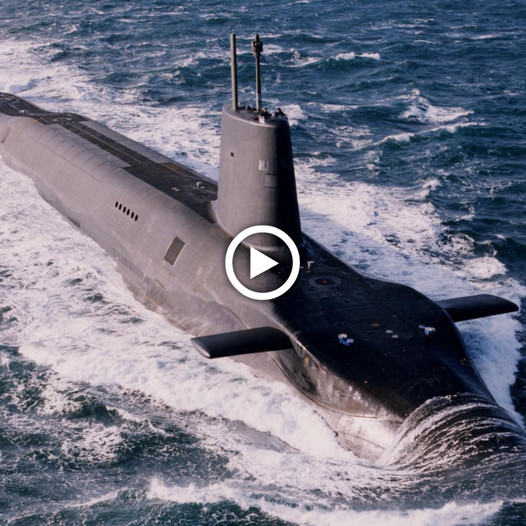
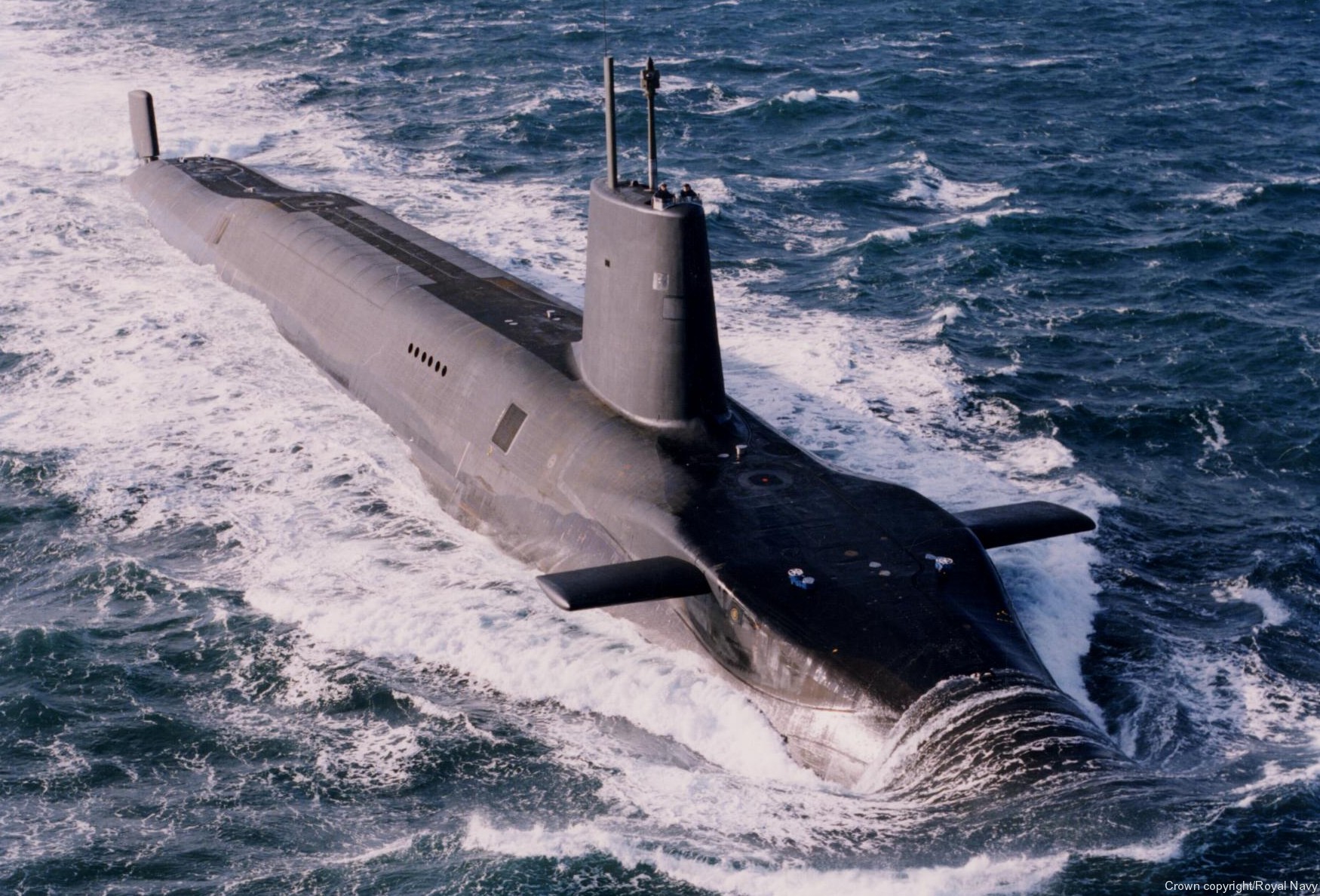
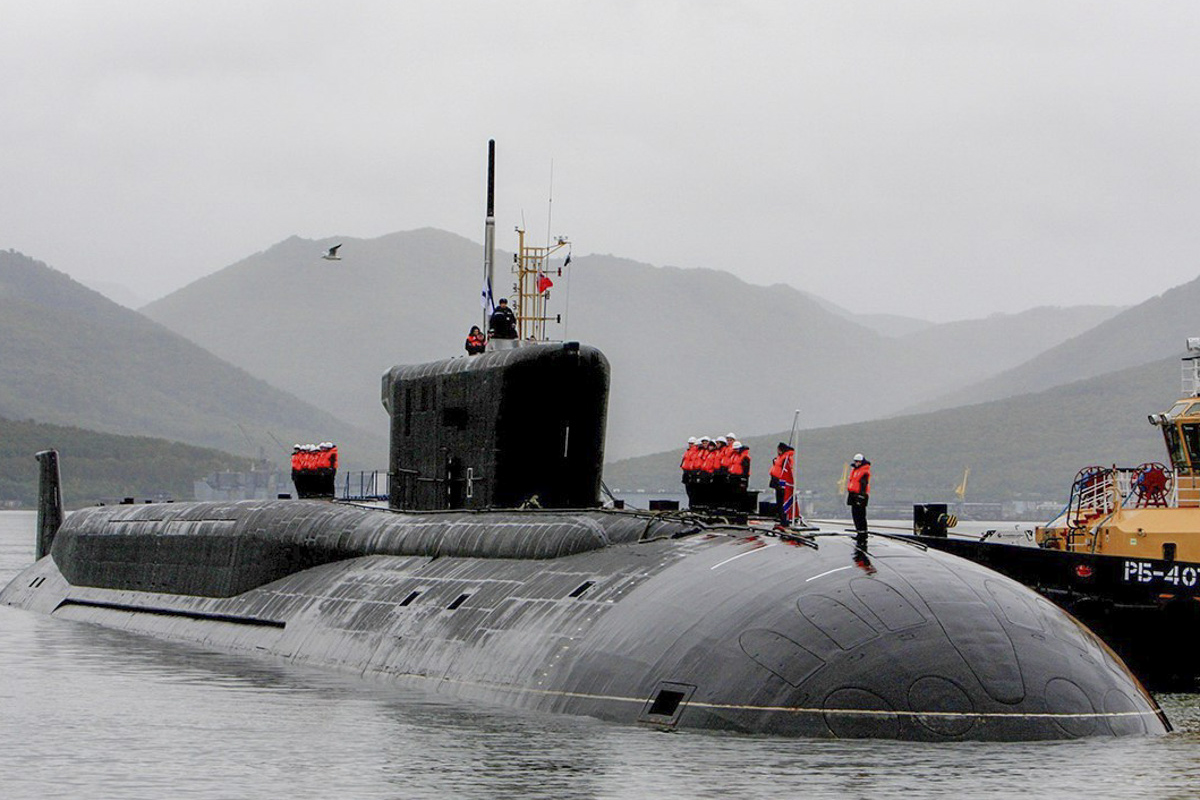
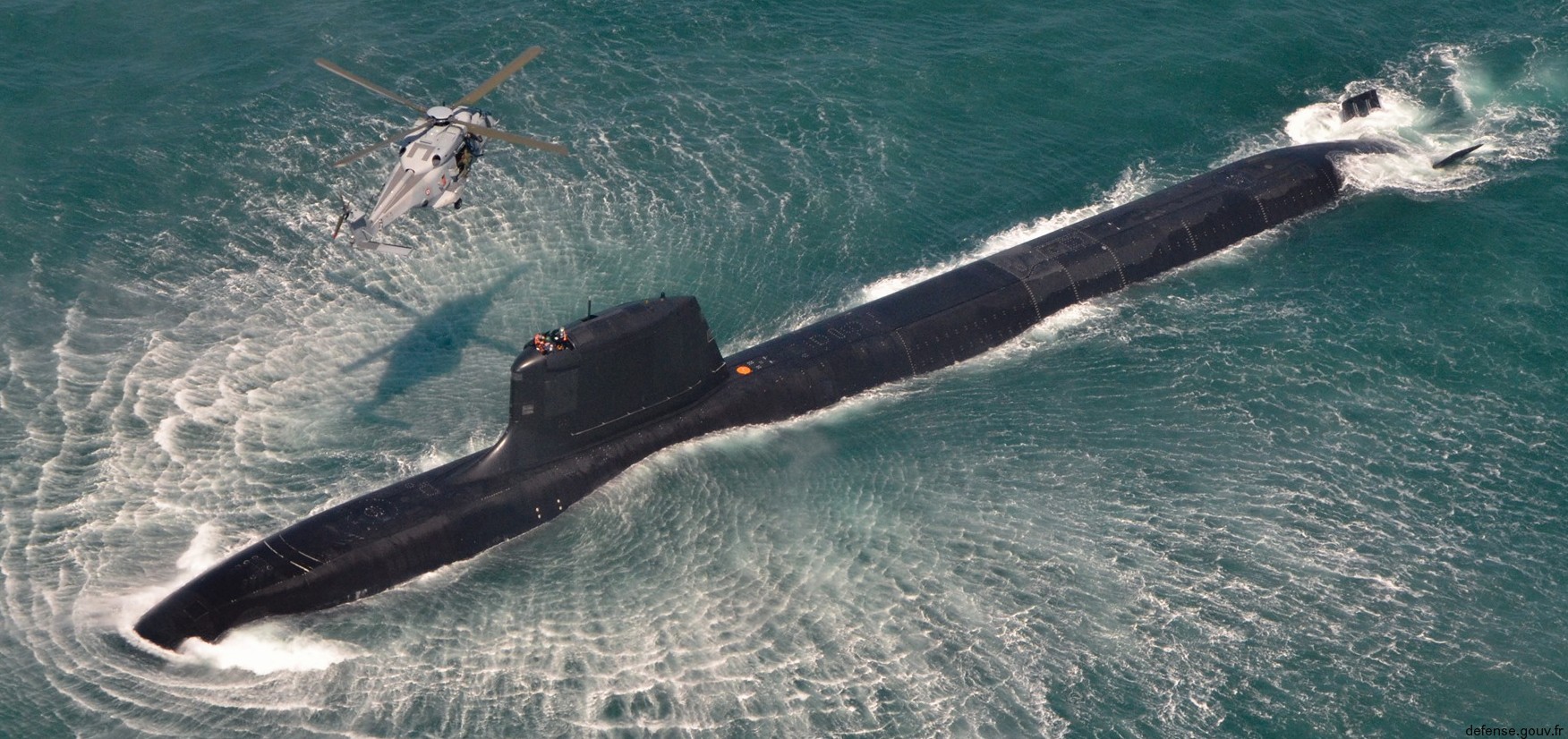
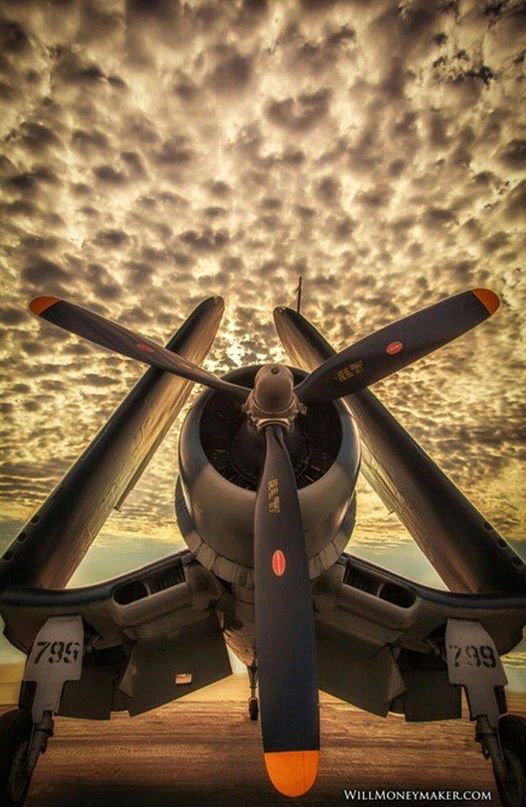
 This model is available in multiple sizes from airmodels.net – CLICK ON THE PHOTO TO GET YOURS.
This model is available in multiple sizes from airmodels.net – CLICK ON THE PHOTO TO GET YOURS.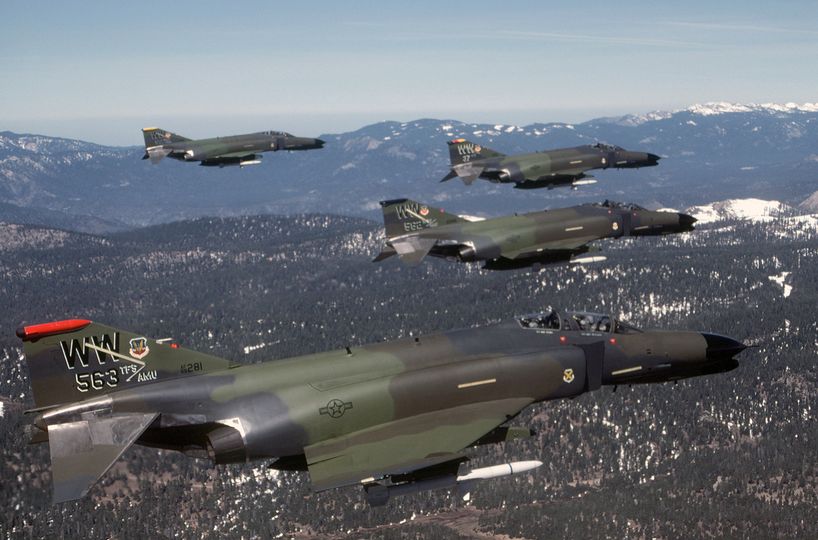
 Production going full blast at McDonnell Aircraft Corp. in production of its F-4 Phantom Jet aircraft, 1966.Getty Images
Production going full blast at McDonnell Aircraft Corp. in production of its F-4 Phantom Jet aircraft, 1966.Getty Images An F-4 Phantom pictured at Fort Bragg in North Carolina, circa 1967.Joe Latham
An F-4 Phantom pictured at Fort Bragg in North Carolina, circa 1967.Joe Latham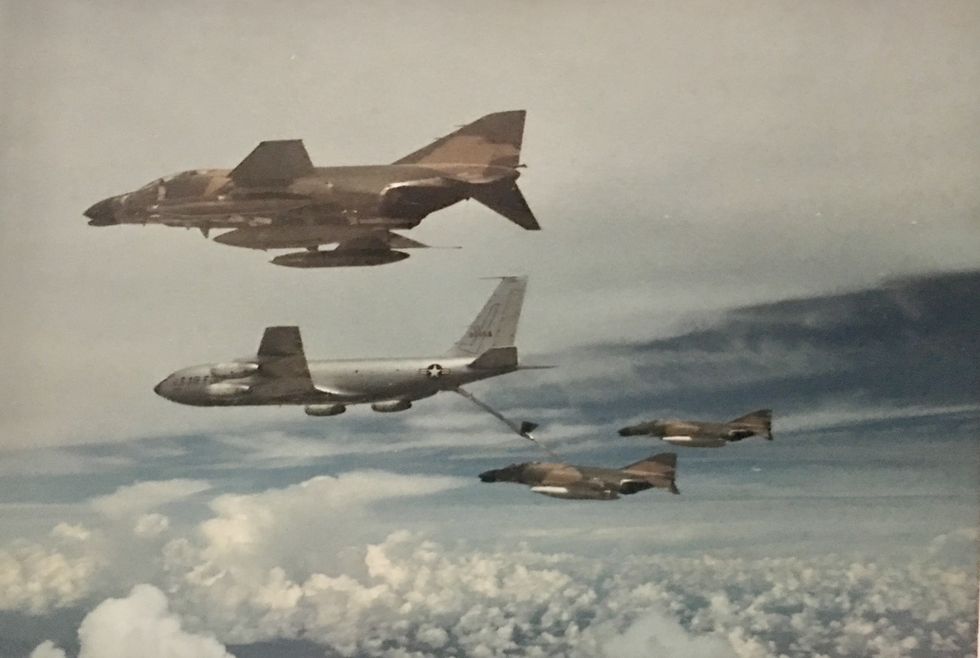 Air refueling over Laos, before crossing the border into North Vietnam, northwest of Hanoi, in 1966.Joe Latham
Air refueling over Laos, before crossing the border into North Vietnam, northwest of Hanoi, in 1966.Joe Latham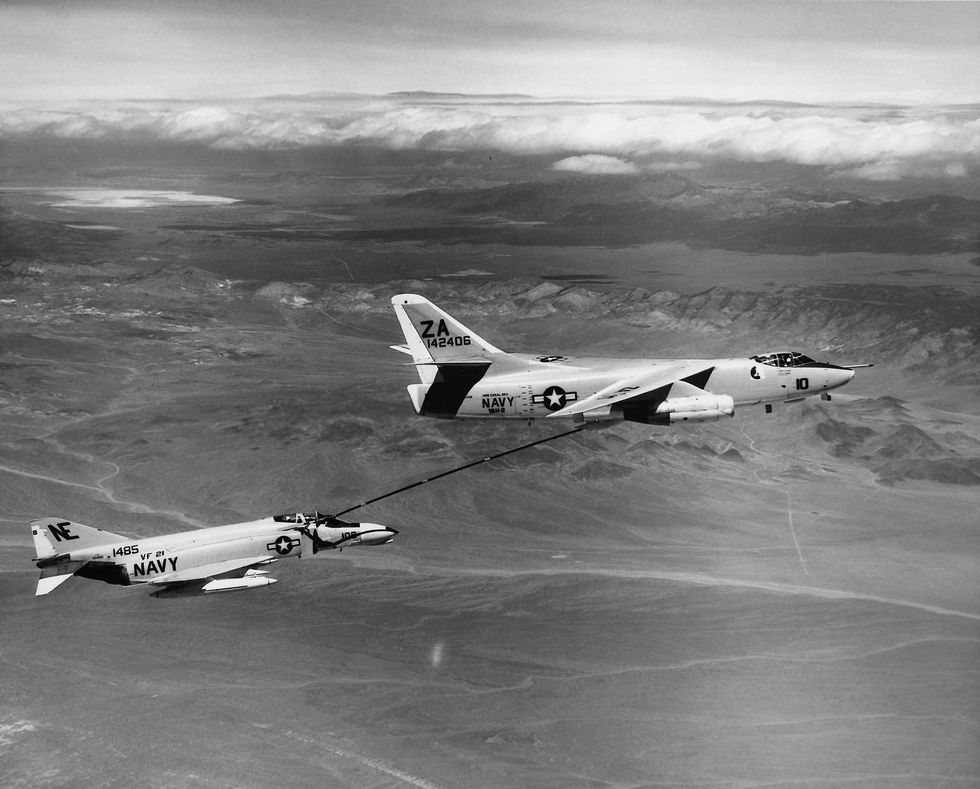 Black and white aerial photograph showing a pair of United States Navy aircraft, McDonnell Douglas F-4 Phantom IIs, refueling while in flight, with clouds and mountains in the distance, photographed during the Vietnam War, 1965.Getty Images
Black and white aerial photograph showing a pair of United States Navy aircraft, McDonnell Douglas F-4 Phantom IIs, refueling while in flight, with clouds and mountains in the distance, photographed during the Vietnam War, 1965.Getty Images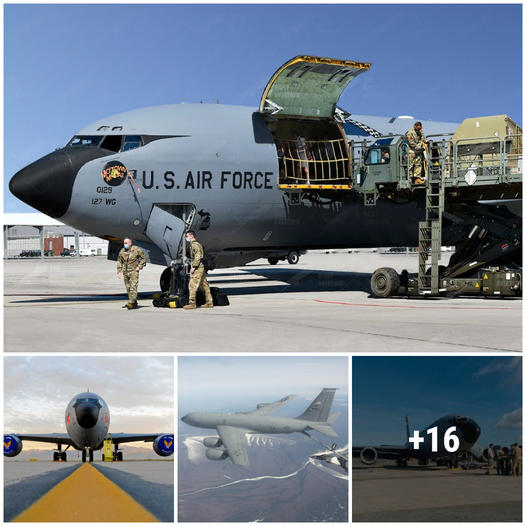

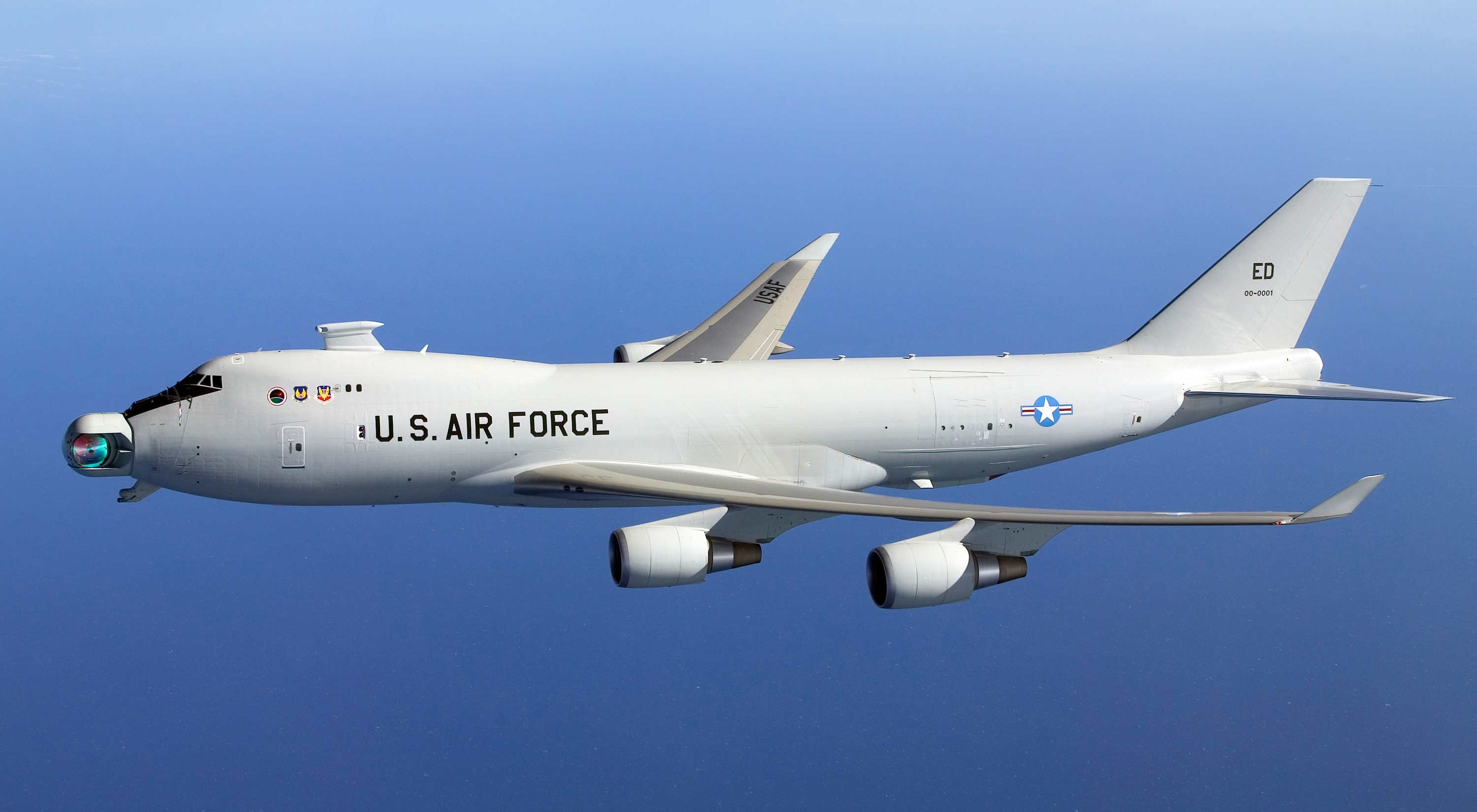

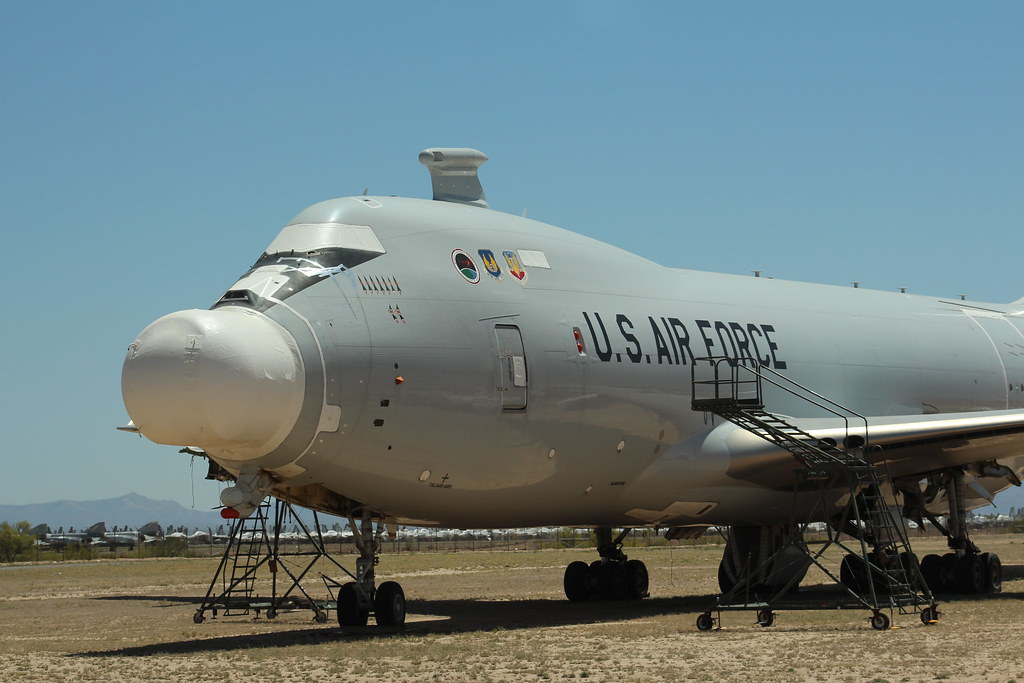

 The Hawker P.1127 was the first step in the process of developing an operational V/STOL combat aircraft.The Aviation Photo Company
The Hawker P.1127 was the first step in the process of developing an operational V/STOL combat aircraft.The Aviation Photo Company Nine Kestrel FGA.1s, including XS688, were purchased to serve with the Tri-partite Evaluation Squadron at RAF Watton in 1964-65.
Nine Kestrel FGA.1s, including XS688, were purchased to serve with the Tri-partite Evaluation Squadron at RAF Watton in 1964-65. 1975.Peter Foster
1975.Peter Foster A Harrier T.4 of 3(F) Sqn. Two-seat Harriers were made available to all frontline squadrons to assist with unit continuation training.AirTeamImages.com/ Keith Blincow (ATI)
A Harrier T.4 of 3(F) Sqn. Two-seat Harriers were made available to all frontline squadrons to assist with unit continuation training.AirTeamImages.com/ Keith Blincow (ATI) Pristine Sea Harrier FRS.1 in 800 NAS markings shortly after the unit was formed in April 1980.Dr Kevin Wright
Pristine Sea Harrier FRS.1 in 800 NAS markings shortly after the unit was formed in April 1980.Dr Kevin Wright An 899 NAS Sea Harrier FRS.1 at RNAS Yeovilton in 1980 and pre-Falklands squadron colour scheme and markings.Dr Kevin Wright
An 899 NAS Sea Harrier FRS.1 at RNAS Yeovilton in 1980 and pre-Falklands squadron colour scheme and markings.Dr Kevin Wright No.1417 Flight was established to operate Harrier GR.3s from Belize City airport between 1980 and 1993 as a deterrent to potential Guatemalan aggression against the former British colony.Key Collection
No.1417 Flight was established to operate Harrier GR.3s from Belize City airport between 1980 and 1993 as a deterrent to potential Guatemalan aggression against the former British colony.Key Collection Two Sea Harrier FRS.1s recovering to a carrier. During the Falklands War the type proved to be a formidable fighter.Key Collection
Two Sea Harrier FRS.1s recovering to a carrier. During the Falklands War the type proved to be a formidable fighter.Key Collection This 3(F) Sqn Harrier GR.3 wears a temporary winter camouflage usually applied for deployed operations.sg-etuo.de Wieland Stolze
This 3(F) Sqn Harrier GR.3 wears a temporary winter camouflage usually applied for deployed operations.sg-etuo.de Wieland Stolze Four Sea Harrier FA.2s from 801 NAS. Its Blue Vixen radar and AIM-120 AMRAAM gave the type beyond visual range capability.Crown Copyright 2005/LA(PHOT) Bunting
Four Sea Harrier FA.2s from 801 NAS. Its Blue Vixen radar and AIM-120 AMRAAM gave the type beyond visual range capability.Crown Copyright 2005/LA(PHOT) Bunting HMS Invincible was off the coast of Oman when this Sea Harrier FA.2 was photographed taking part in Exercise Magic Carpet 05.Crown Copyright 2005/LA(PHOT) Bunting
HMS Invincible was off the coast of Oman when this Sea Harrier FA.2 was photographed taking part in Exercise Magic Carpet 05.Crown Copyright 2005/LA(PHOT) Bunting A selection of British Harrier variants – from front to back is a GR.7, GR.5, FRS.1, T.4 and GR.3.Key Collection
A selection of British Harrier variants – from front to back is a GR.7, GR.5, FRS.1, T.4 and GR.3.Key Collection The Harrier T.12 was the ultimate British trainer variant, with enhanced weapons capability and GR.9 avionics. This example was assigned to 20(R) Sqn at RAF Wittering.AirTeamImages. com/JHribar
The Harrier T.12 was the ultimate British trainer variant, with enhanced weapons capability and GR.9 avionics. This example was assigned to 20(R) Sqn at RAF Wittering.AirTeamImages. com/JHribar A T.8N trainer from RNAS Yeovilton-based 899 NAS.Peter Foster
A T.8N trainer from RNAS Yeovilton-based 899 NAS.Peter Foster A Naval Strike Wing Harrier GR.9 at low level in the Lake District, wearing the markings of 800 NAS and 801 NAS.Ian Nicol-Heap
A Naval Strike Wing Harrier GR.9 at low level in the Lake District, wearing the markings of 800 NAS and 801 NAS.Ian Nicol-Heap Close-up of a Harrier GR.9 taxiing carrying a Maverick air-to-ground missile.Key Collection
Close-up of a Harrier GR.9 taxiing carrying a Maverick air-to-ground missile.Key Collection A Harrier T10 20 Squadron
A Harrier T10 20 Squadron Harrier GR7 1Sqn
Harrier GR7 1Sqn The UK Royal Air Force fleet of Harrier GR.9 V/STOL fighters has been sold to the U.S. Marine Corps for spares. (Photo: Chris Pocock)
The UK Royal Air Force fleet of Harrier GR.9 V/STOL fighters has been sold to the U.S. Marine Corps for spares. (Photo: Chris Pocock)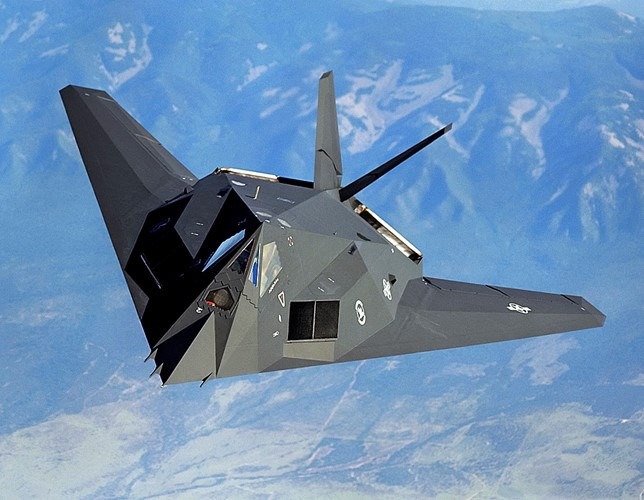
 This model is available in multiple sizes from airmodels.net – CLICK ON THE PHOTO TO GET YOURS.
This model is available in multiple sizes from airmodels.net – CLICK ON THE PHOTO TO GET YOURS.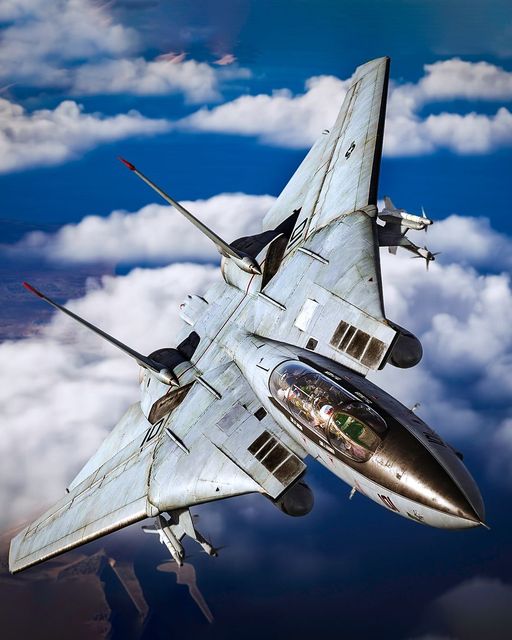
 Via Worth Point
Via Worth Point Via Wikimedia
Via Wikimedia Via Pinterest
Via Pinterest Via The National Interest
Via The National Interest Via GE Aviation
Via GE Aviation Via Pinteret
Via Pinteret Via Pinterest
Via Pinterest Via Wikimedia
Via Wikimedia Via Pinterest
Via Pinterest Via Defence Talk
Via Defence Talk Via Formula 1 Results
Via Formula 1 Results Via Capt Zeen
Via Capt Zeen Via War Thunder Forums
Via War Thunder Forums Via The Drive
Via The Drive Via Wikimedia
Via Wikimedia Via National Interest
Via National Interest Via Wikimedia
Via Wikimedia Via Wikimedia
Via Wikimedia